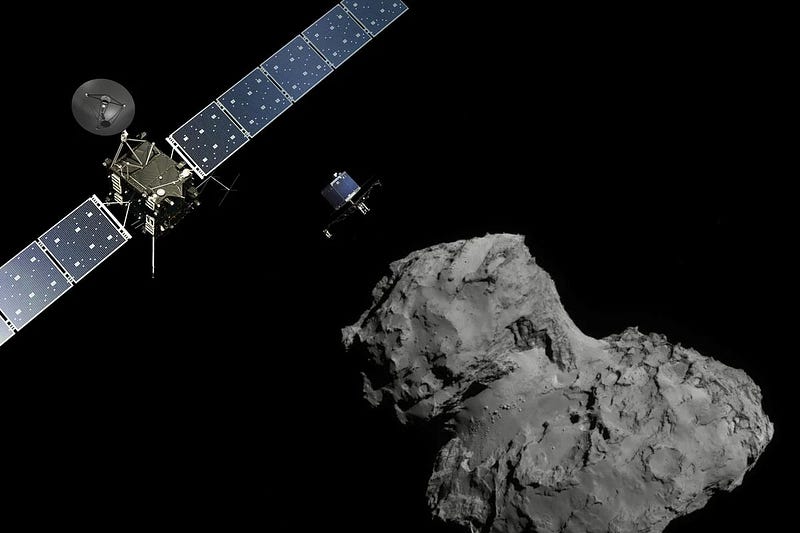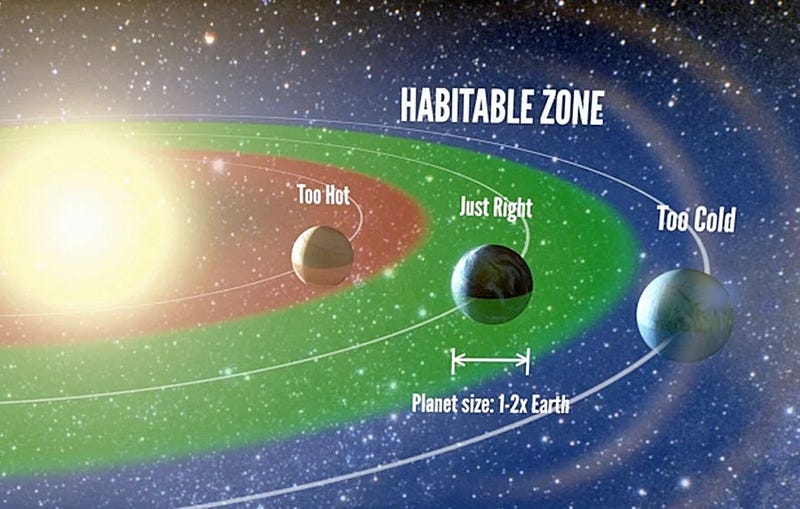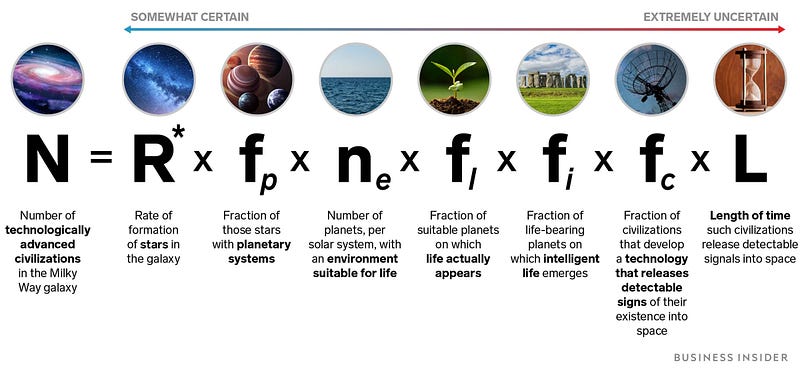# Exploring Our Future Encounter with Extraterrestrial Life
Written on
Chapter 1: The Possibility of Extraterrestrial Life
Many individuals frequently inquire about the existence of life beyond Earth. What might it be like? Is there a genuine possibility that we will encounter it? Why is water considered essential for life? And what could occur when we finally make contact with extraterrestrial beings? Let’s explore these questions!
Currently, a significant number of scientists hold the view that extraterrestrial life is likely. The primary reasoning behind this belief is the vastness of the universe. Even if the chances of life arising are minimal, the countless habitable planets available due to the universe's expanse make the existence of life highly probable.

The Rosetta mission provides further evidence supporting this theory. During this mission, a probe was sent to the comet Churyumov-Gerasimenko, where amino acids, the building blocks of DNA, were discovered. This finding suggests that the formation of DNA is not exclusive to Earth.

Chapter 2: Characteristics of Extraterrestrial Life
On our planet, life is fundamentally based on carbon and water. Carbon serves as the foundation for DNA in all living organisms, enabling evolution and forming the basic structure of our cells. It is this element that allows for the incredible diversity of substances found in living beings.

Water acts as a crucial medium that facilitates the interaction of carbon with other substances. Without water, carbon would simply remain as dust on the Earth's surface or exist as carbon dioxide.
While carbon is relatively abundant in the universe—take Mars, for instance, where the atmosphere is predominantly carbon dioxide—water presents a more complex scenario. There is a significant amount of water in space, but it exists in liquid form only within a narrow range around stars, known as the habitable zone. This is the only region where life can potentially emerge.

For life similar to that on Earth to develop, similar conditions must be present, and it is likely that these life forms would share biochemical characteristics.
Section 2.1: The Search for Intelligent Life
When discussing the potential for extraterrestrial encounters, we primarily consider sentient beings. While discovering single-celled organisms would be remarkable, engaging in conversation with them would be rather impractical.
So, how likely are we to encounter intelligent life? In the mid-20th century, astronomer Frank Drake formulated an equation to estimate the number of civilizations in our galaxy.

Drake's equation calculates the potential number of civilizations that could contact us based on several factors: the rate of star formation, the fraction of stars with planets, the proportion of those planets suitable for life, and the probabilities of life and intelligent life developing, among others.
However, the challenge lies in the unknown values of many of these parameters. For instance, we lack sufficient data to accurately determine the likelihood of life evolving on planets or the emergence of intelligent beings.
In the most pessimistic scenario, only one civilization exists in 10,000 galaxies, suggesting we may be alone in our own galaxy. Conversely, a more optimistic outlook proposes that there may be around 5,000 civilizations in our galaxy ready for contact.
Section 2.2: The Fermi Paradox
If so many civilizations exist, why have we not yet made contact? This dilemma is known as the Fermi Paradox and has several possible explanations.
The simplest explanation is that humanity is the only advanced civilization. However, this notion is questionable.

Other theories propose that civilizations may self-destruct through wars, pollution, or uncontrolled experiments before they can explore the cosmos. Considering human history, this scenario seems plausible.
Chapter 3: What Would Contact Look Like?
What might happen when we finally encounter another civilization? Could it resemble the encounter between the Aztecs and Spanish conquistadors, with us playing the role of the Aztecs?
Hollywood has popularized the image of aliens invading Earth for our resources. However, in reality, we possess no unique resources; everything is more accessible in space, and the idea of traveling hundreds of light-years to conquer is impractical. The only potential interest aliens might have would be in habitable space.

Observations of human civilization indicate that as we evolve, we tend to become more compassionate towards each other and other sentient beings, leading to a more peaceful existence. If extraterrestrial beings share similar developmental trajectories, their visit could likely be peaceful. They might come to establish friendly relations or simply pass by without interaction.
Ultimately, the nature of their psychology and morality could differ significantly from our own. It’s a challenge to apply our understanding of psychology even to Earth’s apes, let alone to beings from other planets, and moral standards can vary widely even among humans.
If you want to see more articles about space in your feed, please clap!
Consider subscribing to our channel and asking your questions, which I will address in future articles. If you appreciate my work, you can support me by becoming a member of Medium for just $5 per month, helping us create even better content.
The first video explores the intriguing question of what extraterrestrial beings may look like, delving into various theories and artistic interpretations.
The second video examines the timeline for when we might discover extraterrestrial life, considering current scientific advancements and possibilities.